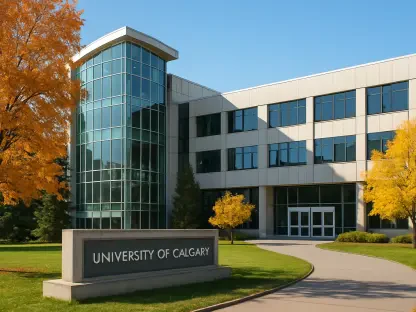In recent times, schools around the Quad-Cities have confronted an increasing number of weather disruptions, leading to significant challenges in maintaining consistent educational schedules. On Tuesday, Jan. 21, an array of schools across Illinois and Iowa adjusted their plans due to unforeseen weather conditions. These changes ranged from complete cancellations and delays to the implementation of e-learning days. The decision process has been primarily driven by prioritizing safety while also minimizing the impact on students’ education. Schools have demonstrated a firm commitment to ensuring that learning continues in a safe and effective manner.
Illinois School Districts’ Adaptive Strategies
Illinois school districts have been particularly proactive in adapting to these disruptions by employing a variety of methods to maintain the educational process. In an effort to keep students safe without compromising their academic progress, several districts opted for e-learning days. Among these were Alwood, Annawan, Galva, Kewanee, Riverdale, and Wethersfield. This approach allows students to continue their studies remotely, thereby avoiding the potential hazards of commuting during severe weather.
Other districts, including East Moline, Erie, Geneseo, Hampton, Jordan Catholic, Mercer County, Orion, Rock Island-Milan, Rockridge, Seton Catholic, Sherrard, Silvis, United Township, and Western Illinois University, decided to cancel school entirely. While this measure ensures immediate safety, the canceled days often necessitate makeup days later in the academic calendar. The balance between ensuring student safety and academic continuity has been a driving factor behind these decisions. The varied responses highlight each district’s flexibility in addressing weather-related disruptions while prioritizing the well-being of students and staff.
Iowa School Districts’ Weather Response
Iowa school districts also faced similar challenges and responded with a mix of cancellations and delayed starts to mitigate the impact of adverse weather conditions. Schools such as All Saints Catholic, Andrew Community, Bettendorf Community, Davenport Community, Easton Valley Community, John F. Kennedy Catholic, Maquoketa Community, North Cedar, Pleasant Valley Community, Prince of Peace Catholic, and St. Paul the Apostle Catholic Schools opted for full cancellations. This conservative approach is aimed at ensuring student safety and avoiding the risks associated with severe weather.
Additionally, several districts including Bennett, Calamus-Wheatland, Camanche, Central DeWitt, Clinton, Northeast Community, St. Joseph Catholic, Tipton, West Branch, and Wilton Community School Districts announced two-hour late starts. This method provides a safer window of time for conditions to improve, ensuring safer travel for students and staff. By postponing classes, schools mitigate the immediate risks while still maintaining most of the day’s academic schedule.
The commitment to balancing safety and educational needs is evident in both states’ approaches. Transitioning to e-learning and other adaptive methods reflects a broader trend of educational resilience against environmental challenges. This proactive stance across numerous educational institutions demonstrates the community’s ability to prioritize safety while ensuring minimal disruption to students’ learning experiences. The overarching trend emphasizes a unified strategy that facilitates continuity in education despite the fluctuating weather conditions.
Conclusion: Ensuring Safety and Continuity
Recently, schools in the Quad-Cities area have faced numerous disruptions due to unpredictable weather patterns, creating significant hurdles in keeping a consistent educational schedule. On Tuesday, January 21, many schools throughout Illinois and Iowa had to modify their plans because of unexpected weather conditions. These adjustments included everything from complete closures and delays to the introduction of e-learning days. The decision-making process was largely influenced by the need to prioritize safety while also striving to reduce the impact on students’ education. Schools showcased their dedication to maintaining educational continuity in a safe and effective manner by adapting to these challenges. The administrations demonstrated a clear effort to balance safety concerns with the objective of ensuring ongoing learning. This evolving approach illustrates how schools are continually working to adapt to the unpredictable and sometimes harsh weather while prioritizing the students’ well-being and education.









